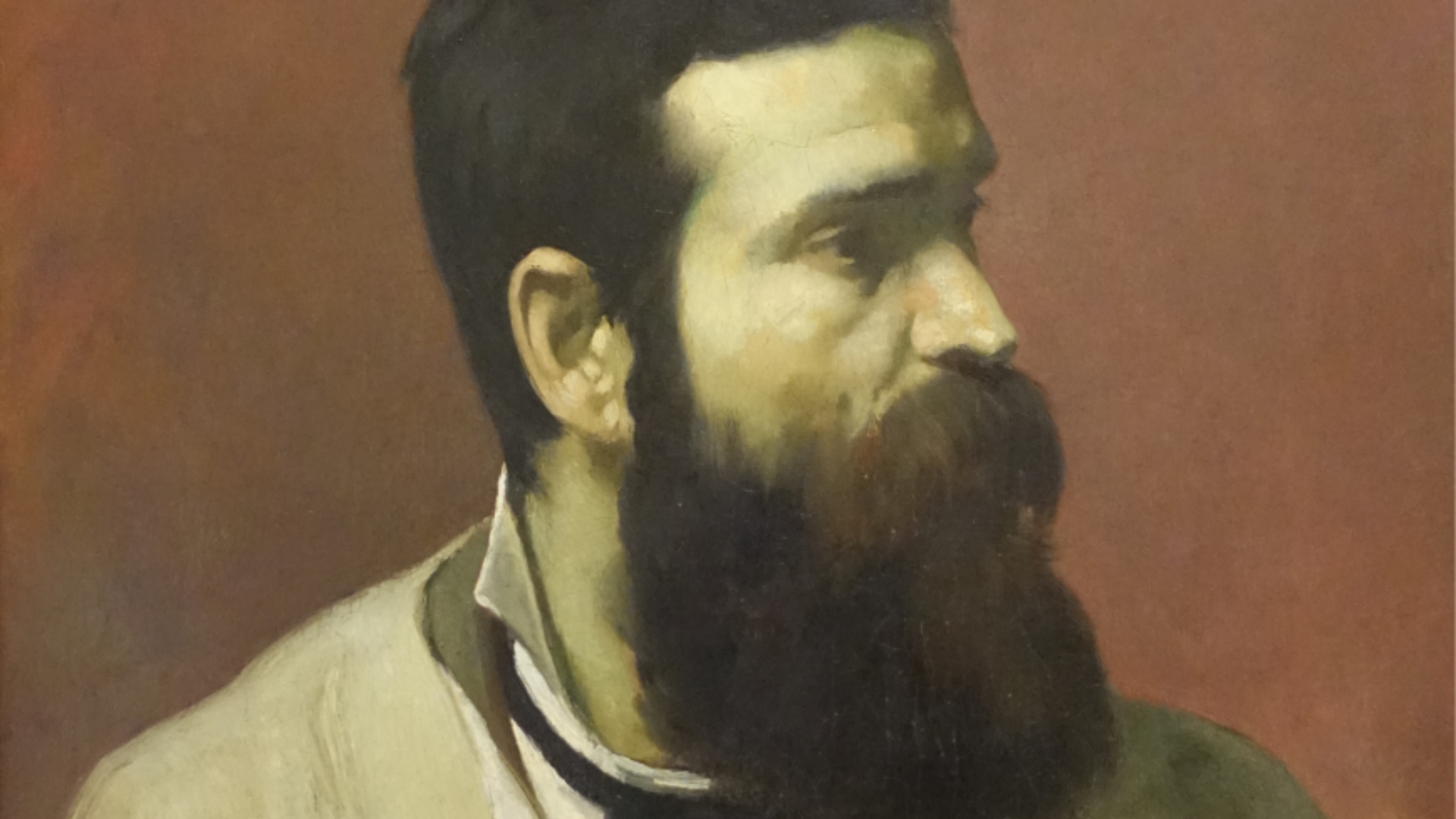Patron of the Museum since 1911 and considered one of the greatest Portuguese sculptors of the 19th century, António Soares dos Reis was born on 14 October 1847 in Santo Ovídio, in the parish of Mafamude, in the municipality of Vila Nova de Gaia.
At just 14 years old, he enrolled at the Academia Portuense de Belas Artes, where – during his studies – he won several prizes and commendations. Within a few years, he had completed the course, winning 1st prize in drawing, architecture and sculpture.
At the age of 20 he became a state student abroad. Between 1867 and 1870 he stayed in Paris as a pensioner, receiving lessons from Jouffroy, Yvon and Taine. In Paris he received several prizes for his work.
After a brief stay in Portugal, in 1871 he left for Rome, a decisive stage in his education. It was in Rome that he began work on O desterrado (The Exiled) (1872), a work of classical inspiration, an essay in the transition to naturalism, which was awarded a prize at the General Fine Arts Exhibition in Madrid in 1881.
Returning to Porto in 1873 to devote himself to his artistic career, he collaborated in publications and chaired the Centro Artístico Portuense. From 1881, he taught sculpture at the Porto School of Fine Arts, although he disagreed with the organisation of the teaching.
Soares dos Reis was admired by his contemporaries, received commissions, took part in competitions and exhibitions and designed public monuments. Illness and dissatisfaction led him to commit suicide in his studio in 1889.
About the Soares dos Reis National Museum
The Soares dos Reis National Museum has its origins in the Museum of Paintings and Prints and other Fine Arts objects, created in 1833 by Pedro IV of Portugal, the first Emperor of Brazil, to safeguard the assets sequestered from the absolutists and convents abandoned during the civil war (1832-34).
With the extinction of the religious orders, works were collected, among others, from the monasteries of Tibães and Santa Cruz de Coimbra. Known as the Museu Portuense, it was housed in the former Convent of Santo António da Cidade, in Praça de S. Lázaro, and was formalised by decree in 1836 by King Maria II.
In 1839, it passed to the direction of the Academia Portuense de Belas Artes, which organised a series of exhibitions in which notable artists such as Soares dos Reis, Silva Porto, Marques de Oliveira and Henrique Pousão were honoured, in successive generations of masters and disciples.
With the proclamation of the Republic, it was renamed the Soares dos Reis Museum in memory of one of the most outstanding names in Portuguese art.
In 1932, it was renamed the National Museum, a period marked by a significant reorganisation by Vasco Valente, through the incorporation of objects from the Episcopal Palace of Porto (Mitra) and the Industrial Museum, as well as the deposit of collections from the extinct Municipal Museum. This was followed, in 1940, by the installation of the Museum in the Carrancas Palace, where it still remains.

